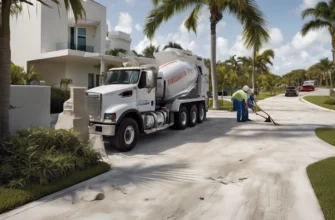- Affordable Skylight Installation Costs in Miami’s Neighboring City: A Comprehensive Guide
- Cost Range for Skylight Installation in Miami’s Neighboring City
- Cost of Skylight Installation in Florida: A Comprehensive Guide
- Material Costs for Skylight Installation in Miami’s Neighboring City
- Estimating Material Needs for Skylight Installation: Size Matters
- Time Frame for Skylight Installation: Assessing Workload
- Essential Professional Tools for Skylight Installation
- Step-by-Step Guide to Skylight Installation: Avoiding Common Mistakes
Affordable Skylight Installation Costs in Miami’s Neighboring City: A Comprehensive Guide
Skylights are a popular choice for homeowners in Miami and its neighboring cities who want to bring natural light into their homes while enjoying the beautiful views of the Sunshine State. However, many homeowners are concerned about the cost of skylight installation. In this comprehensive guide, we will explore the cost range for skylight installation in Miami’s neighboring city, as well as provide a step-by-step guide to help you avoid common mistakes during the installation process.
Cost Range for Skylight Installation in Miami’s Neighboring City
The cost of skylight installation can vary depending on factors such as the type of skylight, the size of the project, and the complexity of the installation. In Miami’s neighboring city, the cost range for skylight installation is typically between $500 and $2,500. This range includes both the materials and labor costs associated with the installation.
To get a more accurate estimate for your specific project, it is best to consult with a professional skylight installer who can assess your needs and provide you with a detailed quote. Keep in mind that the quote may vary depending on the location, accessibility, and any additional services required, such as roof repairs or modifications.
Cost of Skylight Installation in Florida: A Comprehensive Guide
When considering the cost of skylight installation in Miami’s neighboring city, it is important to understand the various factors that contribute to the overall cost. These include the cost of materials, labor costs, and any additional services or modifications that may be required.
The table below provides a breakdown of the average costs associated with skylight installation in Florida:
| Item | Average Cost |
|---|---|
| Skylight | $200 – $1,500 |
| Flashing | $50 – $150 |
| Installation Labor | $250 – $600 |
| Additional Services (if needed) | Varies |
Please note that the above costs are average estimates and can vary depending on the specific requirements of your project. It is recommended to consult with a professional skylight installer to get an accurate quote for your particular needs.
Material Costs for Skylight Installation in Miami’s Neighboring City
The materials used for skylight installation can significantly impact the overall cost of the project. It is important to choose high-quality materials that are durable and suitable for the local climate conditions in Miami’s neighboring city.
The table below provides an overview of the typical material costs associated with skylight installation:
| Material | Average Cost |
|---|---|
| Skylight | $200 – $1,500 |
| Flashing | $50 – $150 |
| Sealant | $5 – $15 |
| Roofing Cement | $5 – $20 |
| Nails | $5 – $10 |
These costs are estimates and may vary depending on the specific brand and quality of the materials chosen. It is advisable to consult with a professional skylight installer or visit a local home improvement store to get a better idea of the material costs for your project.
Estimating Material Needs for Skylight Installation: Size Matters
The size of the skylight plays a significant role in determining the material needs for the installation. Larger skylights require more materials, which can impact the overall cost of the project.
To estimate the material needs for your skylight installation, you will need to measure the size of the skylight opening and consider the type and thickness of the glass or plastic used. It is also important to consider the type of flashing required for your specific roof type and the amount of sealant and roofing cement needed for a secure installation.
To get an accurate estimate of the materials needed for your project, it is best to consult with a professional skylight installer who can assess your needs and provide you with a detailed breakdown of the material requirements.
Time Frame for Skylight Installation: Assessing Workload
The time frame for skylight installation can vary depending on the complexity of the project, the size of the skylight, and any additional services or modifications required. On average, the installation process can take anywhere from a few hours to a few days.
To assess the workload and determine the estimated time frame for your project, it is recommended to consult with a professional skylight installer. They will consider factors such as the accessibility of the installation area, the condition of the roof, and any potential complications that may arise during the installation process.
It is important to plan ahead and schedule the installation at a time that is convenient for you and your family, taking into consideration any potential disruptions to your daily routine.
Essential Professional Tools for Skylight Installation
Installing a skylight requires specific tools and equipment to ensure a safe and successful installation. While homeowners may attempt a DIY installation, it is highly recommended to hire a professional skylight installer who possesses the necessary tools and expertise.
Some of the essential professional tools for skylight installation include:
- Drill with various drill bits
- Reciprocating saw
- Pry bar
- Caulking gun
- Roofing hammer
- Flashing tape
- Measuring tape
- Level
- Safety equipment (e.g., harness, gloves, goggles)
Using the right tools not only ensures a proper installation but also minimizes the risk of accidents or damage to your property. Professional skylight installers are equipped with the necessary tools and have the experience to handle any unforeseen challenges that may arise during the installation process.
Step-by-Step Guide to Skylight Installation: Avoiding Common Mistakes
To ensure a successful skylight installation, it is important to follow a step-by-step guide and avoid common mistakes that can compromise the integrity and functionality of the skylight.
-
Assess the location: Determine the best location for the skylight, considering factors such as the angle of the sun, the view, and the accessibility of the installation area.
-
Prepare the opening: Cut an opening in the roof, following the manufacturer’s instructions and local building codes. Remove any roofing materials and create a flat and level surface for the skylight installation.
-
Install the flashing: Apply the appropriate flashing for your specific roof type, ensuring a watertight seal around the skylight opening. Follow the manufacturer’s instructions and use roofing cement and nails to secure the flashing in place.
-
Install the skylight: Carefully place the skylight into the opening, ensuring a snug fit. Secure the skylight with screws or brackets provided by the manufacturer, following the recommended installation guidelines.
-
Seal the skylight: Apply a generous amount of sealant around the edges of the skylight, creating a watertight seal. Smooth out the sealant using a caulking gun or putty knife to ensure a clean and professional finish.
-
Test for leaks: Once the skylight is installed and sealed, test for any potential leaks by spraying water on the roof and around the skylight. Check the interior of the house for any signs of water penetration.
By following these steps and consulting with a professional skylight installer, you can avoid common mistakes and enjoy the benefits of a well-installed skylight in your home.
In conclusion, skylight installation costs in Miami’s neighboring city can vary depending on factors such as the type of skylight, size of the project, and complexity of the installation. By understanding the cost range, material costs, estimating material needs, time frame, essential tools, and following a step-by-step guide, homeowners can make informed decisions and ensure a successful and affordable skylight installation. Consult with a professional skylight installer to get an accurate quote and expert advice tailored to your specific needs.







